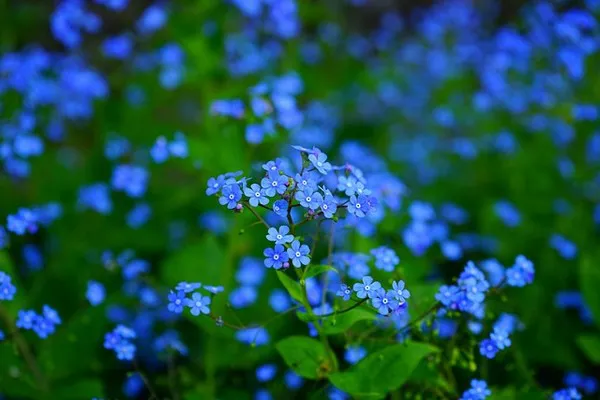Flowers are a beautiful and ephemeral gift from nature that brighten up our lives and surroundings. Whether received as a gift, plucked from your own garden, or purchased at a florist, flowers have a way of making any space more vibrant and welcoming. However, the beauty of fresh flowers is often fleeting, and they tend to wither and fade within a few days. To extend the life and beauty of your floral arrangements, it’s important to learn how to preserve flowers at home. In this comprehensive guide, we will explore various methods to keep your flowers looking fresh for an extended period.
Choosing the Right Flowers
Preserving flowers begins with selecting the right types of flowers. Some varieties are naturally more long-lasting than others. Roses, chrysanthemums, and carnations are known for their durability, making them ideal choices for preservation. In contrast, delicate blooms like tulips, daisies, and lilies have a shorter lifespan.
When purchasing or picking flowers, examine their condition. Choose buds that are not fully open, as this can help prolong their freshness. Ideally, the petals should be firm and free from blemishes, and the stems should be free from mold or rot.
Water and Temperature Control
One of the most crucial factors in preserving flowers is maintaining the right environmental conditions. Flowers require fresh water and a stable temperature to thrive. Here are some key tips for water and temperature control:
Fresh Water: As soon as you receive or cut your flowers, place them in a clean vase filled with fresh, room temperature water. Change the water every two to three days to prevent the growth of bacteria, which can shorten the lifespan of your flowers.
Stem Trimming: Trim the stems at an angle under running water to ensure they can efficiently absorb water. Remove any leaves or foliage that might be submerged in the water, as decaying leaves can promote bacterial growth.
Temperature: Keep your flowers in a cool location, away from direct sunlight, drafts, and heat sources. A consistent temperature between 65°F to 75°F (18°C to 24°C) is ideal for most flowers.
Preserving Flowers with Flower Food
Flower food, available at most florist shops and garden centers, can significantly extend the lifespan of your flowers. These powders or liquid concentrates contain essential nutrients that keep flowers fresh for a more extended period. When using flower food, follow these steps:
Prepare a clean vase with fresh water as mentioned earlier.
Mix the flower food according to the package instructions and add it to the water in your vase.
Cut the stems at an angle under running water and immediately place the flowers in the vase with the prepared water.
Change the water and add fresh flower food every two to three days.
Drying Flowers
Drying flowers is an excellent way to preserve their beauty indefinitely. There are various methods to dry flowers, each with its unique charm. Here are some popular drying techniques:
Air Drying: The most straightforward method involves hanging your flowers upside down in a dry, dark place for a few weeks. Flowers like lavender, roses, and baby’s breath work well with this technique.
Pressing: Place your flowers between the pages of a heavy book and leave them to press for several weeks. This method is ideal for small, delicate blooms like pansies and violets.
Silica Gel: Silica gel is a drying agent available at craft stores. Bury your flowers in a container filled with silica gel, ensuring that the blooms are completely covered. The gel will gradually draw out the moisture, preserving the flowers’ shape and color.
Using Wax to Preserve Flowers
Another creative way to preserve flowers is by dipping them in wax. This method creates a unique, vintage look and can be used for various purposes, such as making candles or decorative pieces. To wax-preserve your flowers:
Melt paraffin wax or beeswax in a double boiler until it becomes liquid.
Dip your flowers one at a time into the wax, making sure to coat them evenly. Use a gentle touch to avoid damaging the delicate petals.
Allow the wax-coated flowers to cool and harden on a sheet of wax paper.
Repeat the process if you want a thicker wax layer, and store the preserved flowers in a cool, dry place.
Freeze Drying Flowers
Freeze drying is a more advanced method of preserving flowers that requires specialized equipment. This process involves freezing the flowers and gradually removing the moisture from them. While it may be less accessible for home use, some professional freeze-drying services can preserve flowers with stunning results. This method is particularly suitable for retaining the colors and shapes of flowers like roses and orchids.
Conclusion
Preserving flowers at home is a rewarding endeavor that allows you to enjoy the beauty of your favorite blooms for an extended period. By choosing the right flowers, maintaining proper water and temperature conditions, and exploring various preservation methods like drying, wax coating, or even freeze-drying, you can keep your flowers looking fresh and vibrant.
Whether you aim to create long-lasting floral arrangements, preserve cherished bouquets, or simply enjoy the beauty of your garden flowers year-round, these techniques offer a wide range of possibilities for flower enthusiasts. Remember that each method has its unique charm and requirements, so feel free to experiment and discover which one suits your preferences and needs best. With a little care and creativity, you can enjoy the splendor of fresh flowers in your home for weeks, months, or even years to come.


